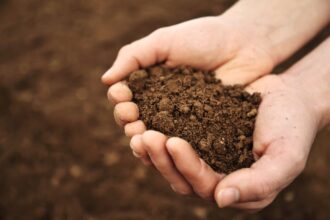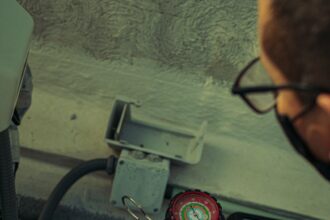Erosion strips away valuable soil, weakens terrain, and threatens nearby communities and businesses. Whether it’s the aftermath of heavy rain, construction, or wildfire, exposed land can quickly become unstable and costly to repair. Hydroseeding offers a fast, effective way to protect soil and encourage healthy plant growth before serious damage sets in.
This method, offered by professional hydroseeding services, uses a sprayed mixture of seeds, mulch, water, and binding agents to anchor the soil and kickstart vegetation. It’s gaining popularity not just for its speed, but for its ability to support long-term land recovery across diverse environments—from roadsides to steep hillsides and post-disaster zones.
Hydroseeding for Quick Soil Protection
Hydroseeding sprays a mix of seeds, mulch, and sticky binders over bare soil to form a protective layer. This layer keeps soil from washing or blowing away. Unlike older methods like straw or fences, hydroseeding works faster and covers more ground with less effort. The mulch holds moisture to help seeds grow, and the binders hold everything in place.
Because it works quickly, hydroseeding is often used right after events like heavy rains or construction work, when land is most at risk for erosion. Applying it as soon as possible can prevent serious soil loss. Choosing good-quality seeds and other ingredients makes a big difference in how well the process works.
What Makes Hydroseeding Successful?
The success of hydroseeding depends on choosing the right mix for the location. Every area is different—soil type, climate, and local plants all play a role in what works best. Sandy soil, for example, might need different seeds than heavy clay soil. Taking the time to match the mixture to local conditions gives seeds a better chance to grow strong roots and hold the soil in place.
Weather also plays a big part. Wet conditions often help seeds grow faster, while dry spells can slow things down. Adding bonding agents helps the mixture stay in place and cover the soil evenly, which makes a big difference in preventing erosion. It’s also smart to test the soil ahead of time to know what you’re working with.
Hydroseeding in Emergency Situations
After major storms, landslides can become a serious threat. Hydroseeding can help stop these areas from losing even more soil. Spraying the mixture quickly on damaged land creates an immediate barrier that reduces erosion. This helps protect the land as well as nearby homes, roads, and water supplies.
Hydroseeding works well along roadsides after accidents or roadwork. It keeps the soil from washing away, helping to keep roads safe. Wildfire-damaged areas also benefit since hydroseeding helps plants regrow and speeds up recovery. After big construction jobs, spraying hydroseed protects bare soil and supports new plant growth, which helps the land heal.
Better Equipment for Bigger Jobs
Modern hydroseeding equipment makes it easier to cover large areas fast. High-pressure sprayers evenly spread the seed mixture, which helps everything grow more evenly. This is especially useful for big projects where time and coverage are important. Adding materials like tackifiers and polymers helps the mix stick better and stay in place, giving seeds the best chance to grow and keeping erosion in check.
When land is hard to reach—like steep hills or remote areas—aerial hydroseeding can get the job done. Helicopters or planes can cover these tough spots quickly. Advanced nozzles also make it easier to adjust how and where the mixture is sprayed, so the application is as accurate as possible.
Costs and Long-Term Benefits
At first, hydroseeding might seem more expensive than traditional erosion control methods. However, over time, it often leads to savings. Healthy plant growth reduces soil loss and cuts down on the need for future repairs. Less erosion means less money spent on fixing damage later.
Hydroseeding also promotes a variety of plants that protect the soil naturally. Once plants are established, they form a living shield that stops future erosion and keeps the land strong. For example, deep-rooted grasses like fescue and rye help anchor the soil, while legumes such as clover improve nitrogen levels, enhancing overall soil health. This approach supports long-term goals like preserving local ecosystems.
Hydroseeding offers more than just quick erosion control—it sets the stage for lasting land recovery. When applied promptly and with the right mix, it protects vulnerable soil and supports healthy plant growth, even in challenging conditions. Modern tools and techniques make it easier to treat large or hard-to-reach areas, while experienced crews can tailor each project to local needs. Though the upfront cost may seem higher, the long-term savings from reduced damage and fewer repairs make it a smart investment. For anyone looking to restore and strengthen land after disruption, hydroseeding is a practical, effective, and future-focused solution.















